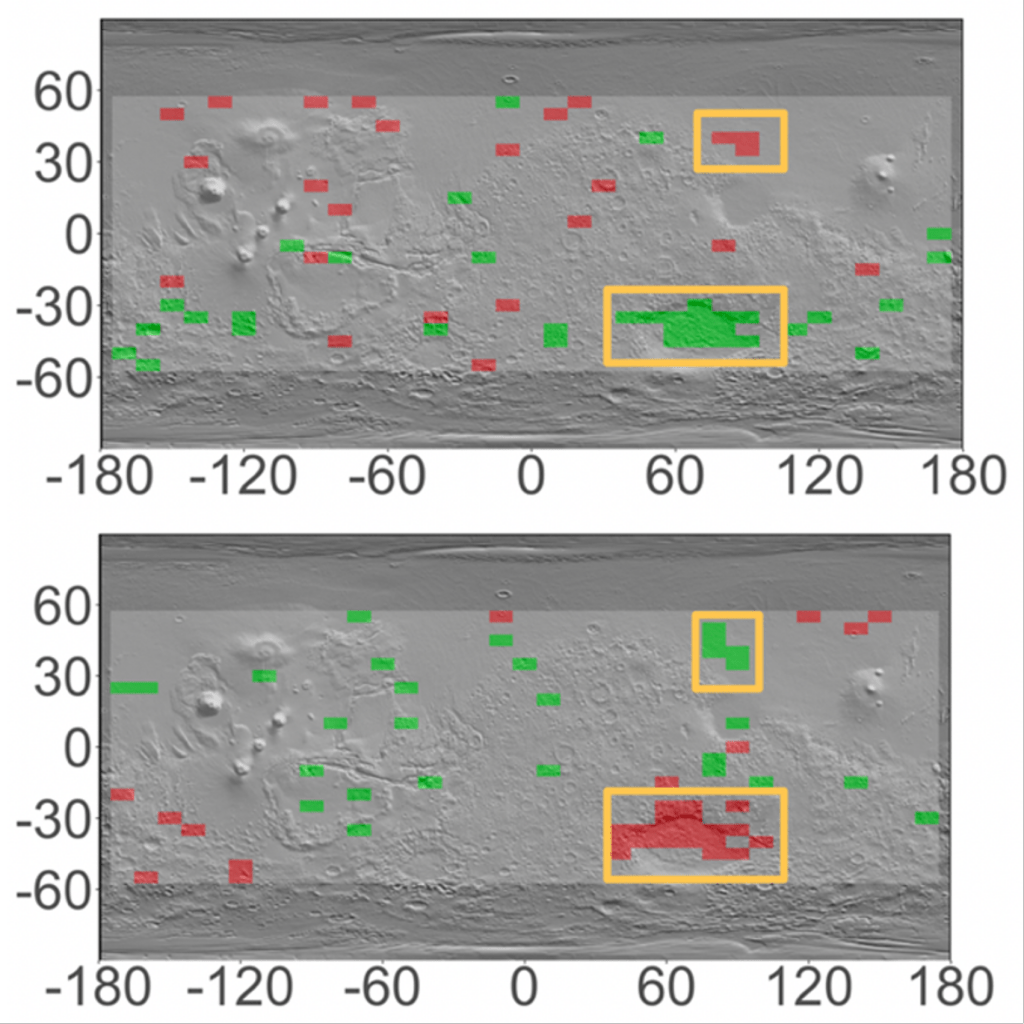The search for water on Mars has consumed a lot of data collection and research time. Underground lakes have been found and then discounted again. Melted ice has been proposed and then dismissed again. All this attention focuses on one of the most important resources available to any future Martian explorers. Water is critical to human life and can also be split into two crucial components for rocket fuel. So finding an easily accessible cache of it is a prerequisite to any serious human mission to the red planet that expects to return its crew back home.
A team from the Lunar and Planetary Institute (LPI) thinks they might have found easily accessible reservoirs of water ice at much more temperate latitudes than had been traditionally thought. Finding any significant water source near the equator would be cause for celebration, as most large known water deposits are located near the poles, which is even more inhospitable to human exploration than the rest of the planet.
Such a reservoir is precisely what Dr. Germán Martínez of LPI and his team think they have found. To do so, they used data collected by Mars Odyssey’s Neutron Spectrometer. They looked at sub-surface hydrogen levels, which have been studied before. But their novel contribution was to notice a pattern.
There was a spike in hydrogen levels in certain parts of the planet, particularly in Hellas Planitia and Utopia Rupes in the southern and northern hemispheres, respectively. That spike happened to be seasonal, which pointed to a type of source scientists hadn’t been able to differentiate before.

Credit – G. Martinez et al.
Water ice could potentially be the cause of the seasonality. The spectrometer’s measured hydrogen signal increased during the colder months, which indicates that water ice could be freezing in the subterranean regions Odyssey was monitoring. During warmer months, the ice would sublimate, carrying away the hydrogen and leading to a drop in Odyssey’s readings.
Another finding lends even more credence to the hypothesis that relatively accessible water ice is the cause of the signal. Odyssey found other areas with high levels of hydrogen, but they did not show the seasonality that the readings at Hellas Planitia and Utopia Rupes did. In these cases, the water is probably deeper underground, less susceptible to sublimation in warmer months, and therefore less accessible for use in exploration missions.

Credit – Martinez et al.
Those exploration missions could include robotic rovers, which would likely be necessary to confirm or deny the presence of easily accessible waters in these areas. Other remote sensings efforts can be brought to bear in the meantime. If the LPI team’s hypothesis turns out to be accurate, that new information could be a game-changer for the location of any future crewed Martian mission.
Learn More:
EuroPlanet Society – Scientists use seasons to find water for future Mars astronauts
UT – Does Mars Have Seasons?
UT – Nothing Says Springtime on Mars Like Explosions of Sand
LPI – Missing Water on Mars May Be Stored in the Crust
Lead Image:
Image of Mars from Viking Orbiter.
Credit – NASA / JPL -Caltech / USGS


Keep up the good work. Good news about the water on Mars.